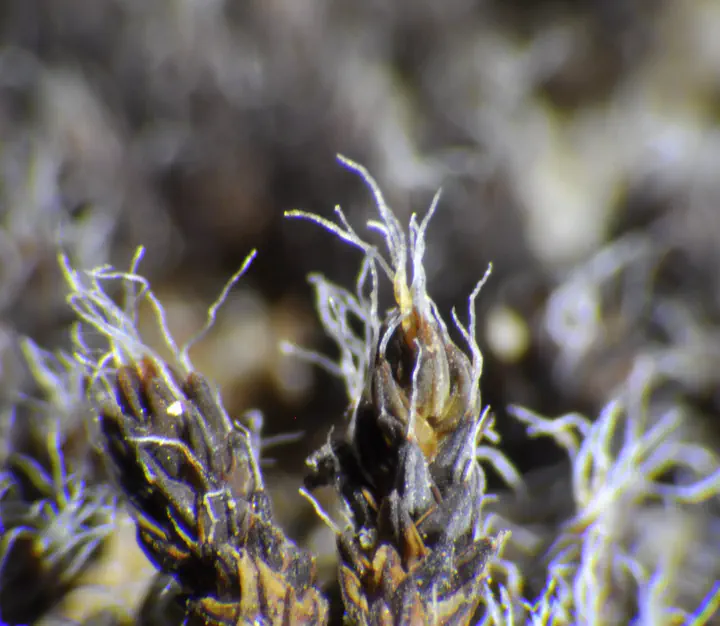Natural ultraviolet radiation exposure alters photosynthetic biology and improves recovery from desiccation in a desert moss
 Two dry and dark brown Syntrichia caninervis shoots.
Two dry and dark brown Syntrichia caninervis shoots.Abstract
Plants in dryland ecosystems experience extreme daily and seasonal fluctuations in light, temperature, and water availability. We used an in situ field experiment to uncover the effects of natural and reduced levels of ultraviolet radiation (UV) on maximum PSII quantum efficiency (Fv/Fm), relative abundance of photosynthetic pigments and antioxidants, and the transcriptome in the desiccation-tolerant desert moss Syntrichia caninervis. We tested the hypotheses that: (i) S. caninervis plants undergo sustained thermal quenching of light [non-photochemical quenching (NPQ)] while desiccated and after rehydration; (ii) a reduction of UV will result in improved recovery of Fv/Fm; but (iii) 1 year of UV removal will de-harden plants and increase vulnerability to UV damage, indicated by a reduction in Fv/Fm. All field-collected plants had extremely low Fv/Fm after initial rehydration but recovered over 8 d in lab-simulated winter conditions. UV-filtered plants had lower Fv/Fm during recovery, higher concentrations of photoprotective pigments and antioxidants such as zeaxanthin and tocopherols, and lower concentrations of neoxanthin and Chl b than plants exposed to near natural UV levels. Field-grown S. caninervis underwent sustained NPQ that took days to relax and for efficient photosynthesis to resume. Reduction of solar UV radiation adversely affected recovery of Fv/Fm following rehydration.